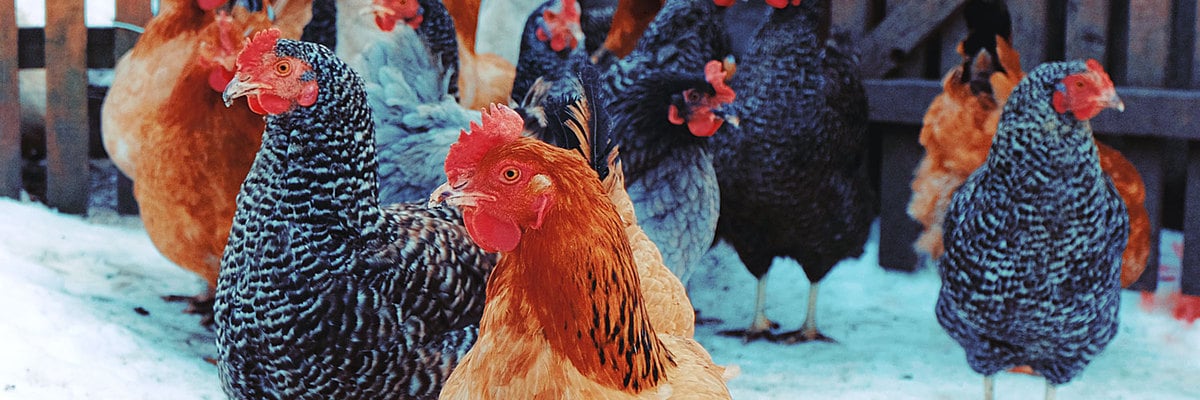How to Insulate a Chicken Coop or Barn


If you’re cold, they’re cold.
Although chickens and other farm animals have layers of down feathers or fur coats, they will still need a cozy coop or barn to keep warm in. An ideal coop or barn should be warm, secure, and free of drafts.
Your main goal is to make the place your barnyard friends call home free of drafts and dry.
As a customer concierge here at RetroFoam of Michigan, I field a lot of questions from homeowners. This one, in particular, piqued my interest as we had chickens when I was growing up.
In this article, I am going to tell you why you do need to insulate a chicken coop or barn and how foam board, fiberglass, or spray foam insulation can get the job done.
Insulation Options for Chicken Coops and Barns
Since there are insulation options for your coop or barn, I’m going to explain each material here, so you have a better understanding of how it works.
Foam Board Chicken Coop or Barn Insulation
Foam board is a rigid panel of insulation that is made of either polystyrene, polyisocyanurate, or polyurethane.
The boards are offered in a variety of thicknesses, lengths, and facings so it can be customized to fit the project you’re using it for.
Fiberglass Chicken Coop or Barn Insulation
Fiberglass insulation is made up of extremely fine glass fibers.
For use in a chicken coop or barn, the fiberglass batt or roll would be the best fit compared to blown-in or loose-fill fiberglass.
Closed Cell Spray Foam Chicken Coop or Barn Insulation
Closed cell spray foam insulation is a spray-applied plastic that forms a continuous insulation and air seal where it is installed.
Closed cell is known for its durability and water resistance.
How to Insulate a Chicken Coop or Barn
Before you get started adding chicken coop or barn insulation, you need to make sure the space is clear of rodents and other pests.
You will also want to ensure the coop or barn is nice and clean, so the installation can go off without a hitch. Also, these materials need to be installed into the open cavity of the walls and ceiling, and if you have floor joists and not just a dirt floor, there as well, although in the majority of cases there is no floor.
Most of the time, the walls and ceiling are exposed, to begin with, but for two of these options, you’ll want to at least cover the walls and flooring after the insulation has been installed.
Let’s take a brief look at how each material is installed.
Foam Board Insulation for Chicken Coops or Barns
If you’re insulating your coop or barn with foam board insulation, you would cut the boards to perfectly fit in the wall cavity, floor joists, and ceiling.
After everything is measured and cut, then you will need to use tape or caulk to make sure everything is sealed uptight. If not, then you are just going to have more air leaks and unhappy barnyard friends.
The walls and floor will need to be covered to protect the insulation.
Fiberglass Insulation for Chicken Coops or Barns
Much like foam boards, the fiberglass batts will need to be cut to fit into the walls and ceiling, and if applicable the floor.
It might be tempting, but fiberglass can’t be crammed into the cavities. If this is done, then you’ll be left with pockets where air can move into the coop or barn. Keep in mind though, fiberglass won’t prevent air movement completely, so you don’t want to add to that issue.
The batts will need to be placed into the cavities and stapled into place. If there is paper or foil backing, you’ll want that to face the interior of the coop or barn. This is because that backing acts as a vapor barrier.
Again, the walls and floor will need to be covered.
Closed Cell Spray Foam Insulation for Chicken Coops or Barns
Closed cell spray foam insulation can be installed by spraying it directly into the cavities.
Closed cell at 2-inches in each cavity will create an air seal. Unlike the other insulation materials, spray foam is the only option that creates an air seal. This air seal will keep your chickens, chicks, horses, or cows warm and dry.
Closed cell spray foam also has a vapor barrier that is built right into it.
The closed cell is durable, so in a barn, you could leave it exposed on the walls. In a chicken coop, I would suggest covering it because chickens are curious, and they will likely peck at it.
Adding Chicken Coop and Barn Insulation
Now that you know what your insulation options are, it’s up to you to decide what will best meet your needs.
If you want to create a dry and temperature-regulated space, then spray foam is going to be the best option. Closed cell doesn’t allow for air movement, it creates an air seal, but it also doesn’t allow moisture and water to move through it.
When it comes to chicken coops and barns, these are some serious benefits.
We have a lot of great resources on our website, so if you want to learn more about the benefits foam insulation has to offer, check out our Learning Center.
Related Articles
Will Spray Foam Insulation Keep Pests Out of the Home?
What is the Best Pole Barn Insulation? (Spray Foam vs Fiberglass vs Foam Board)
R-Value vs Air Seal: What is More Important When Buying New Insulation?
About Rian Dufty
With more than six years of customer service experience, Rian joined the RetroFoam of Michigan team as a customer concierge. A typical workday for Rian includes answering calls, calling homeowners, scheduling estimate appointments, and following up with homeowners after their installation. When Rian isn’t at work, she spends her time with friends, family, and her dog Cooper.


